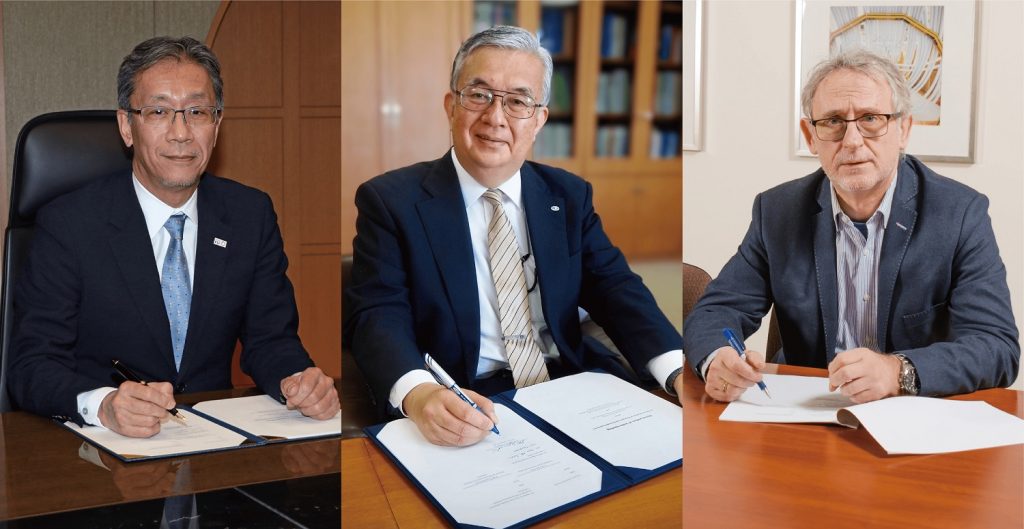
National Centre for Nuclear Research (NCBJ) in Poland, High Energy Accelerator Research Organization (KEK) and The University of Tokyo (UTokyo) signed a memorandum of understanding (MoU), which aimed to promote the Hyper-Kamiokande international scientific research project, whose main detector has been under construction with plans to start operation in 2027 at Kamioka, Hida City, Gifu Prefecture in Japan. Nineteen countries showed their interest in participating in this Japan-led project and Poland is the first nation to sign MoU.
UTokyo President Teruo Fujii, KEK Director General Masanori Yamauchi and NCBJ Direcor Krzysztof Kurek exchanged signatures by post until the middle of February 2022, due to a quasi-state of emergency declared by the Japanese government to stem the COVID-19 pandemic.
According to the MoU, the Polish Hyper-Kamiokande Consortium has been organized by nine institutions: Institute of Nuclear Physics Polish Academy of Sciences, University of Silesia, National Centre for Nuclear Research (NCBJ), Warsaw University of Technology, University of Warsaw, University of Wrocław, AGH University of Science and Technology, Jagiellonian University and the Nicolaus Copernicus Astronomical Center of the Polish Academy of Sciences. Development, production, and installation of a linear electron accelerator, composite photosensor modules, electronics circuit modules, etc. are among their foreseen contributions.
The Hyper-Kamiokande detector is planned to have a fiducial mass eight times larger than its predecessor detector, Super-Kamiokande, and it is equipped with newly-developed high-sensitivity photosensors. The aim of the project is to elucidate the Grand Unified Theory and the history of the evolution of the universe through an investigation of proton decay and CP violation (the asymmetry between neutrinos and antineutrinos), together with the observation of neutrinos from supernova explosions. The budget of the construction was approved in the Japanese Diet in February 2020, which marked the official start of the project. The construction has gotten into full swing with the access tunnel excavation for the experimental site which started in May 2021.
